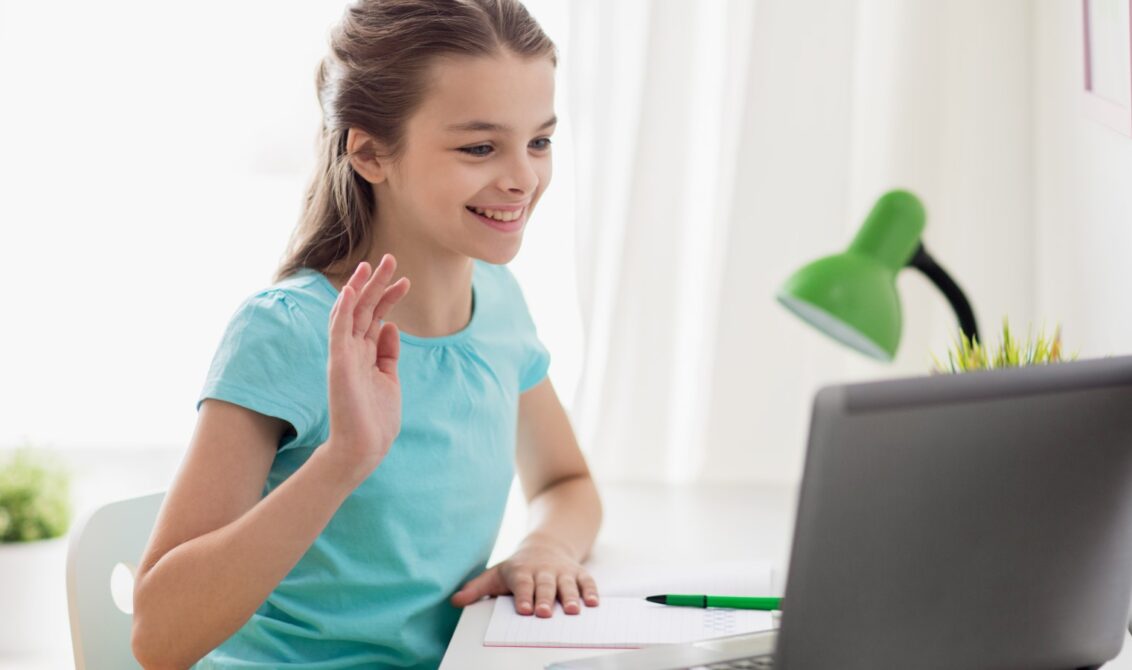
In the early days of the COVID-19 pandemic, schools and other educational establishments were forced to shift their teaching online, in many cases without advance warning or training for educators. Now that it’s been a couple of months, teachers and students are getting into the rhythm of teaching and learning from home. And, it’s a great time to take a look at some new teaching techniques – especially ones that work well with distance learning.
What is flipping the classroom?
In a traditional classroom, the teacher is the main focus of the lesson. They are traditionally the people who present new information through a lecture or presentation, and guide students through practice activities. Students then answer questions, write essays or create projects as homework.
Flipped learning is different. It’s defined as “a pedagogical approach in which direct instruction moves from the group learning space to the individual learning space, and the resulting group space is transformed into a dynamic, interactive learning environment where the educator guides students as they apply concepts and engage creatively in the subject matter.”
In other words, flipping the classroom turns the traditional learning structure on its head. Instead of presenting a new learning concept in class, teachers prepare the presentation of the information and give it to students to watch or read on their own before the class. Then, class time is used for group activities, class discussion and peer-to-peer collaboration.
What are the benefits of a flipped classroom?
There are numerous benefits to the flipped classroom technique. This student-centred approach allows more time for teachers to check comprehension, answer queries and clear up any confusion that students may have around a new topic.
It means that instead of using your class time to explain the basics of a new topic or idea, you can spend your contact time on helping students with the practical application of their new knowledge. Moving direct instruction outside class time also means that you can focus on making the classroom a dynamic learning environment, with lots of opportunity for differentiated instruction.
And there are lots of benefits for students, too! Instead of being passive recipients of knowledge, they will become active participants in their own education. Flipping the classroom encourages students to take responsibility for their own learning, developing the kind of independent skills needed to be lifelong learners. A flipped classroom has also been shown to improve exam results, student engagement and teacher-student communication.
Why flipped classrooms work for distance learning
Distance learning provides the ideal opportunity for trying out the flipped classroom, as students are doing so much learning from home anyway. It will build on and improve your relationship with your students, as the teacher-student dynamic shifts from a less instructional model to a more collaborative one. And this can help with motivation, too. When your class time is all about practical application of ideas, supporting student understanding and peer-to-peer collaboration, it makes for a more dynamic and engaging online class.
And with distance learning set to continue, it’s never a bad thing to try out pedagogical approaches which encourage independent learning among your students.
How to flip your classroom in three easy steps
So there are compelling reasons to try out the flipped classroom technique – but what is the best way to go about it? Here’s a brief overview to get you started. We also recommend you check out some of these detailed guides online.
1. Get your subject matter ready for independent study
Prepare the material you want your students to study in advance of your online class. It’s important to consider the best way of delivering this material.Is it by video? Through a text extract? As an infographic or a podcast? Or maybe it’s a combination of the above.
There are lots of different options, although video is the most popular method of direct instruction. The most effective video length is between five and ten minutes. Think about how you can make your presentation engaging, funny and creative. If the thought of recording yourself on screen makes you nervous, don’t worry! There are lots of tips online to help you create great educational videos – and you’ll end up with a fantastic bank of your own video resources.
2. Motivate your students to prepare for class
The success of a flipped classroom depends on your students preparing properly for the class – and this can lead to reservations among teachers. However, there are a few strategies you can employ to get your students motivated.
You could check in the day before the class to remind students to review the material in advance of the lesson. Another option is letting students know that the class will start off with a short quiz on the material that they have learned. You could also ask them to prepare a set number of questions to ask about the subject matter. Or, if the direct instruction is explaining a concept, you could ask your students to think of some concrete examples to bring to class and share with their classmates.
Once students are more familiar with the flipped classroom technique, they’ll understand that doing this preparation in advance of their lesson is important and relevant to their time in class.
3. Plan your class time to support and deepen student understanding
It’s a good idea to review content at the very beginning of your lesson, creating an opportunity for students to ask any questions that came up while they were preparing for class. Then, fill your class time with activities that promote active learning – such as group work, discussing examples, presenting student-created content, debates and project work.
In addition to making your online classes more engaging, active learning activities also develop 21st century skills, allowing lots of time for critical thinking, communication and creative collaboration, as well as improving information and technological literacy.
We hope this post inspires you to try out the flipped classroom technique. And don’t forget to check out our blog for more ideas on effective online teaching strategies.

